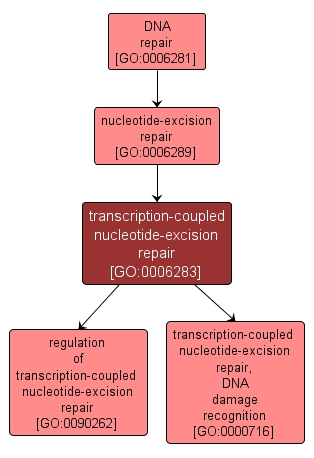| Desc: |
The nucleotide-excision repair process that carries out preferential repair of DNA lesions on the actively transcribed strand of the DNA duplex. In addition, the transcription-coupled nucleotide-excision repair pathway is required for the recognition and repair of a small subset of lesions that are not recognized by the global genome nucleotide excision repair pathway. |














